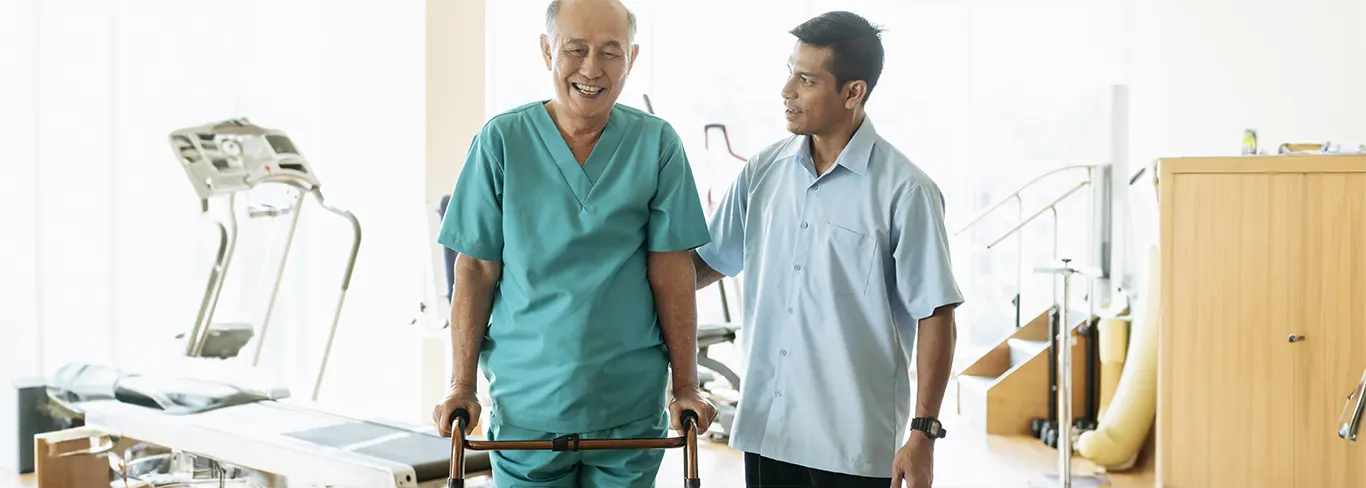Joint replacement is a safe and effective surgery that improves patients' quality of life by providing symptomatic relief, improving mobility, and restoring joint function.
The most common reason for joint replacement surgery is osteoarthritis, a degenerative condition that affects the cartilage in the joint, leading to pain, stiffness, and decreased mobility.
Other conditions that may require joint replacement surgery include rheumatoid arthritis, joint injury or trauma, and avascular necrosis (loss of blood flow to the bone).

Prosthetic joints are artificial devices that replace a damaged or diseased joint. There are two main types of prosthetic joints: total joint replacements, which replace the entire joint, and partial joint replacements, which replace only the damaged or diseased parts of the joint.
Prosthetic joints are typically made from metal, plastic, or ceramic materials and are designed to mimic the function of a natural joint. They are attached to the bones with cement or other fixation devices and are usually expected to last for many years, although the lifespan of a prosthetic joint can vary depending on factors such as the patient's age, activity level, and overall health.
A small percentage of people with replacement joints are at risk of developing an infection. A prosthetic joint infection is an infection that occurs in a joint replacement, such as a hip or knee replacement. This type of infection can occur within the first few months after surgery or even years late.
Causes of prosthetic joint infection
Symptoms of prosthetic joint infection
If you experience any of these symptoms after joint replacement surgery, it is important to contact your doctor right away.
Diagnosis of prosthetic joint infection
Diagnosing prosthetic joint infections can be challenging, as the symptoms may be nonspecific and can mimic other conditions. Patients with relevant signs and symptoms of infection and a joint prosthesis should be suspected of prosthetic joint infection.
Your doctor would first question your general health and symptoms before conducting a thorough physical examination. Diagnosis is made based on your reported symptoms, physical examination, and investigations.
Treatment options for prosthetic joint infection
Prosthetic joint infection can be hard to treat due to the development of biofilm within the joint. When bacteria adhere to the solid surface of an artificial joint, a biofilm forms. The biofilm can function as a shield for some bacteria, making it difficult to detect and destroy them with the body's natural defences or antibiotics.
The treatment of prosthetic joint infection typically involves a combination of surgical intervention and antibiotic therapy.
Surgical intervention
The surgical treatment of prosthetic joint infection may involve one or more of the following procedures:
Antibiotic therapy
The type of antibiotic and duration of treatment may vary depending on the severity of the infection, the type of bacteria involved, and other factors. Intravenous antibiotics may be given initially, followed by oral antibiotics.
Prevention of prosthetic joint infection
Preventing prosthetic joint infections involves a combination of measures before, during, and after surgery. Here are some steps you can take to help reduce the risk of infection:
Make an appointment at Gleneagles Hospitals
If you are experiencing any of the symptoms of prosthetic joint infection, get in touch with us to find out more about our Orthopaedic Services at your nearest Gleneagles Hospital.
Gleneagles Hospital works with orthopaedic specialists to assist patients through diagnosis and treatment. The caring and multidisciplinary team of healthcare professionals are available for consultation and to provide the best care.

Wait a minute